Top image: Hurricanes of 80 Squadron in Palestine, June 1941 as flown by Roald Dahl
It can often be a bit of a surprise to discover that famous people, as well as our own family members, did extraordinary things in the Second World War. Some of them may have told their tales, while others remained silent.
With the release of new military records online it is fascinating to now find their names recorded and so add some details to their story. When it is a member of the Royal Air Force from WW2 that you are researching, the Operations Record Books (ORBs), which are being released in batches on TheGenealogist, are essential reading in order to follow the person in the squadron’s day to day activity. These diary-like records allow the researcher to see named pilots and airmen and learn something about what they were involved in doing on an individual day in their unit.
A painful entry to his squadron for a famous children’s author
Take, for example, the author Roald Dahl. Some of us will have read the second part of his autobiography, Going Solo. In 1939, when war was coming, Dahl joined the Royal Air Force to fight for his country. His book tells its readers that the author took part in a number of very significant missions, such as the war in North Africa, where he crash landed and was blinded for a number of days and then the fighting in the air over Greece.
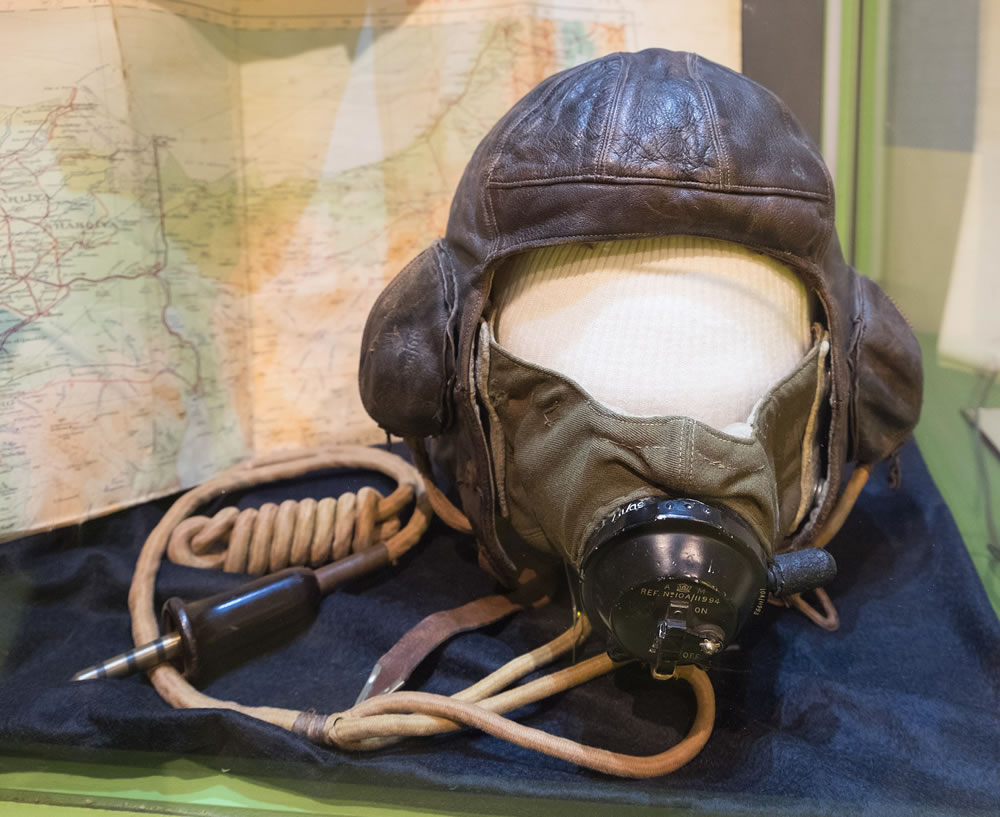
A search for Dahl in the ORB records introduces the researcher to him arriving at his new squadron on 20 September 1940. The report spells out that Pilot Officer Dahl made a dramatic entrance in his posting to No. 80 Squadron, based at the time in Sidi Heneish in Egypt. An arrival that he probably wished at the time wasn’t quite so painful for him, but which he was later prepared to recount in his book.
The ORB records that P/O Dahl “was ferrying an aircraft from No 102 M.U. to this unit, but unfortunately not being used to flying aircraft over the Desert he made a Forced landing 2 miles West of Mersa Matruh. He made an unsuccessful forced landing and the aircraft burst into flames. The pilot was badly burned and he was conveyed to an Army Field Ambulance Station.”
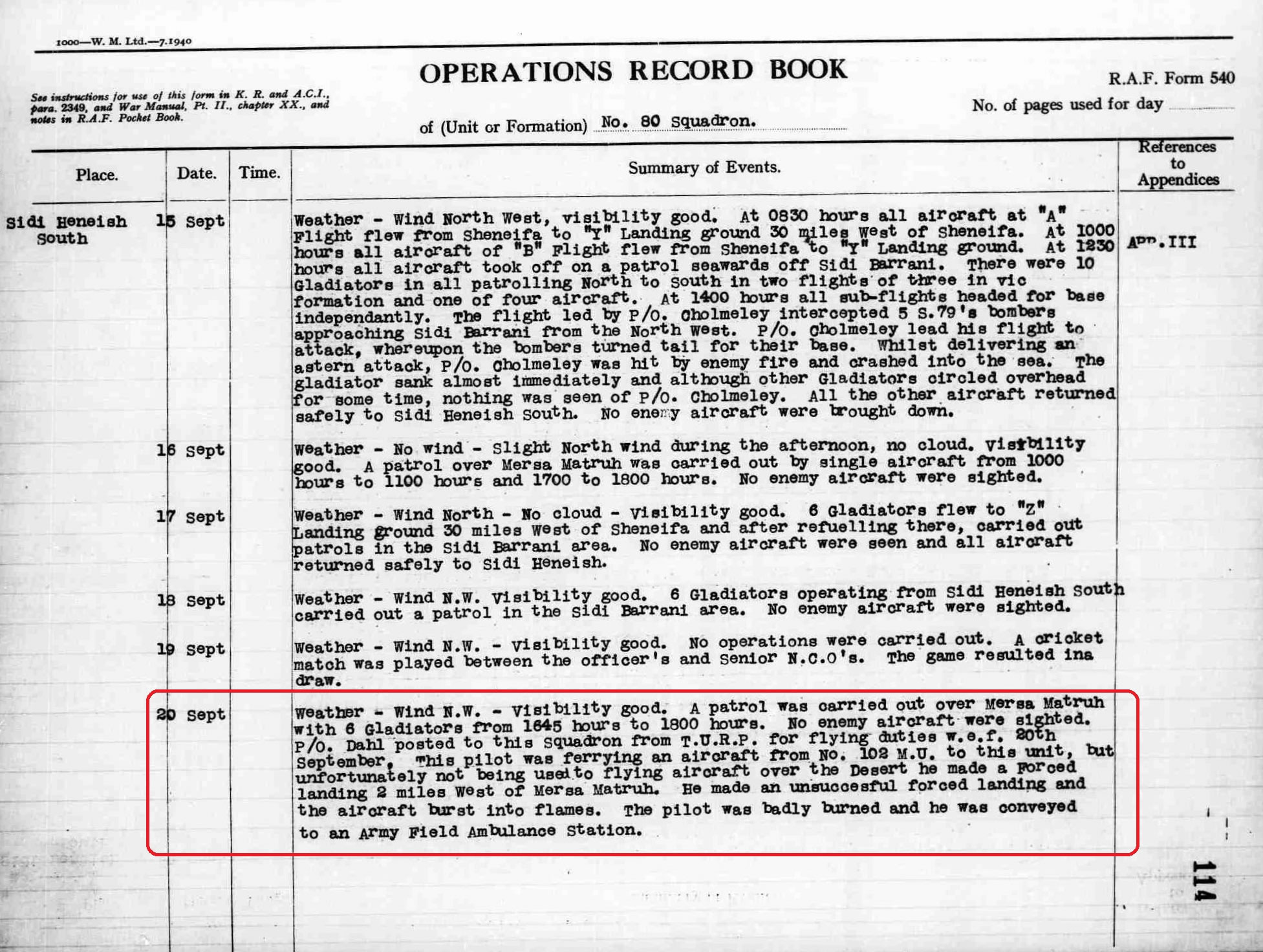
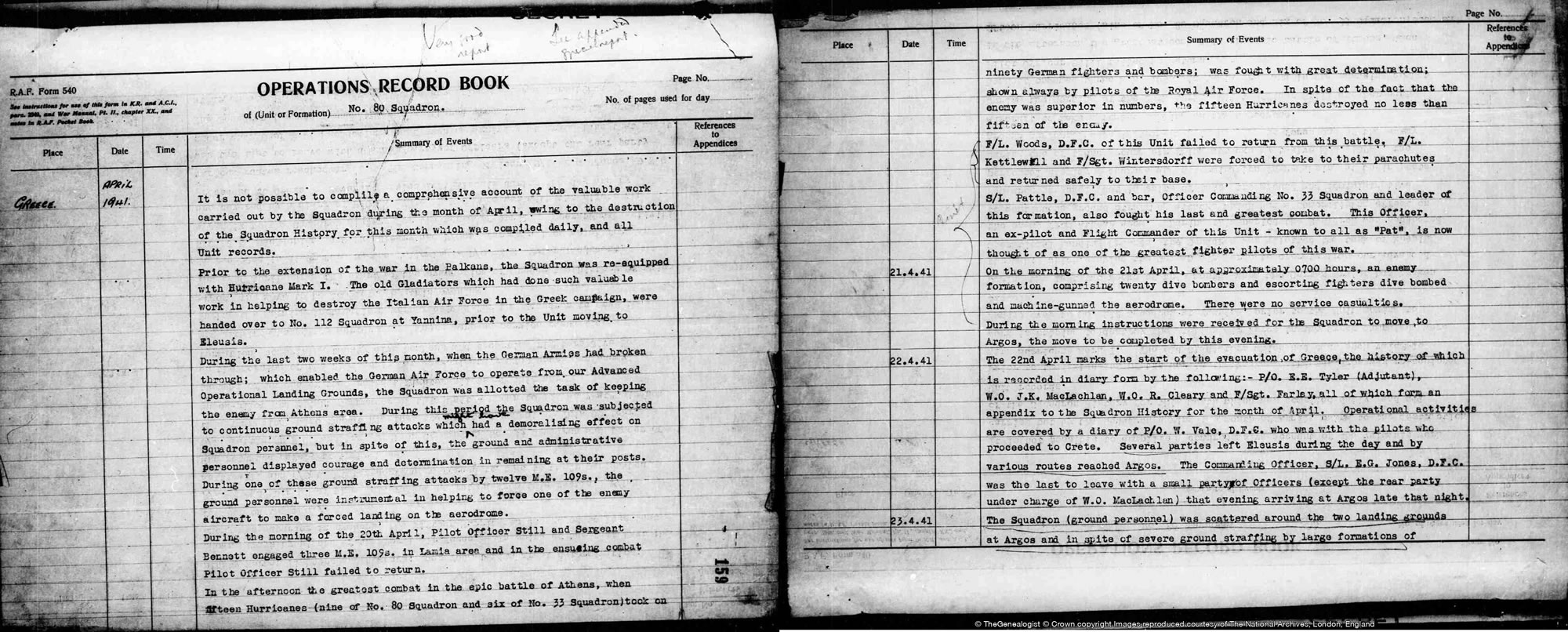
In the afternoon the greatest combat in the epic battle of Athens, when fifteen Hurricanes (nine of No. 80 Squadron and six of No. 33 Squadron) took on ninety German fighters and bombers; was fought with great determination; shown always by pilots of the Royal Air Force. In spite of the fact that the enemy was superior in numbers, the fifteen Hurricanes destroyed no less than fifteen of the enemy.
Early morning wake-up-call raids on the enemy
Pilot Officer Dahl’s name then occurs frequently in the records of the daily operations of his squadron. An example, where action took place, was in the month of June 1941. We can see that early in the morning of the 8th of June, Roald Dahl took off at 05:15 with three other pilots to carry out the R.A.F’s attack on the Rayak Aerodrome. This base is in Lebanon and in World War II was an airfield under Vichy French control and so allied to Nazi Germany. The ORB states that Dahl and his fellow pilots left three planes on fire from their early morning wake-up-call for the enemy.
Access Over a Billion Records
Try a four-month Diamond subscription and we’ll apply a lifetime discount making it just £44.95 (standard price £64.95). You’ll gain access to all of our exclusive record collections and unique search tools (Along with Censuses, BMDs, Wills and more), providing you with the best resources online to discover your family history story.
We’ll also give you a free 12-month subscription to Discover Your Ancestors online magazine (worth £24.99), so you can read more great Family History research articles like this!
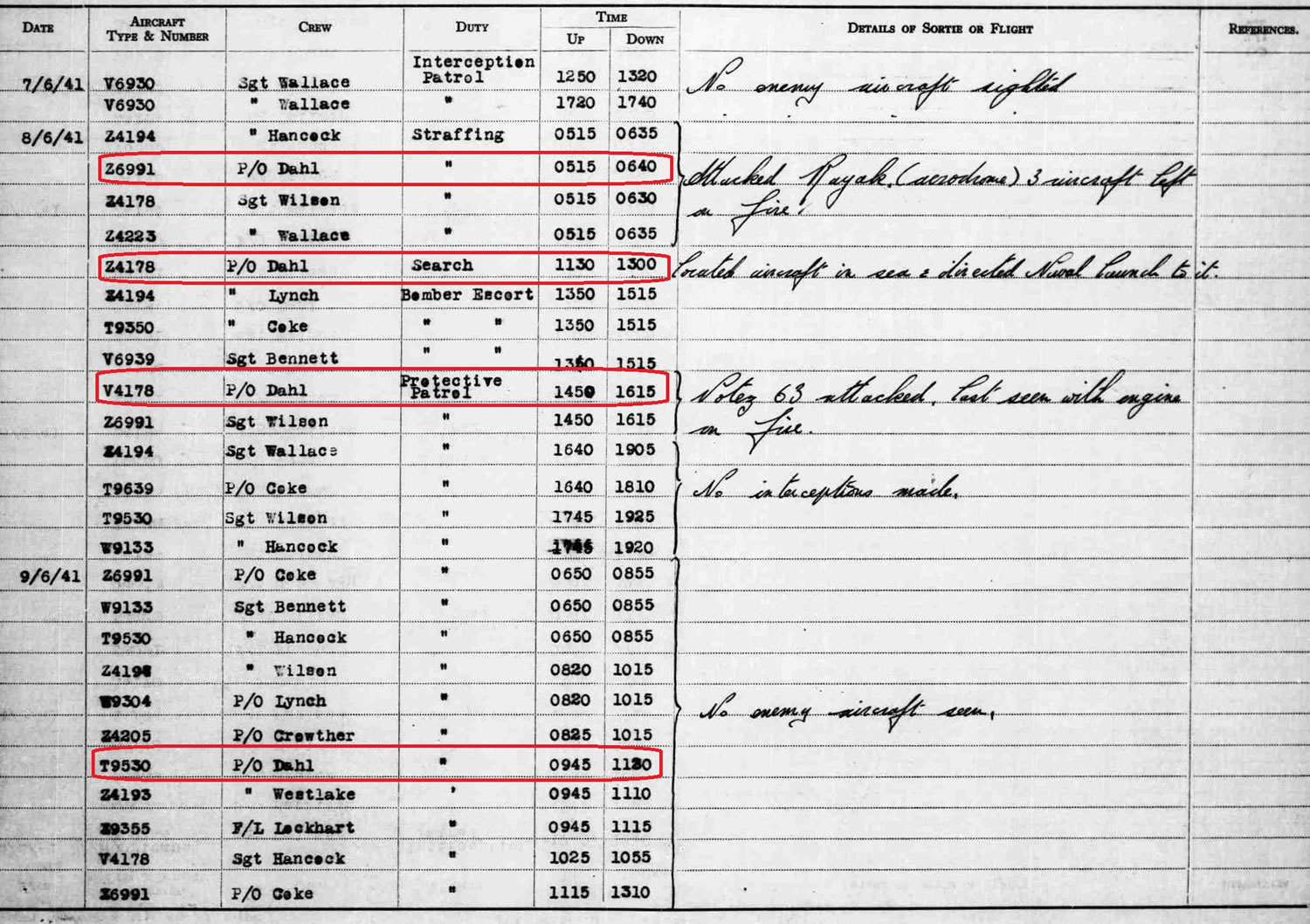
Later that morning, he was up in the air again on a search mission when he located an aircraft in the sea and directed a Naval launch towards it. The afternoon saw a Protective Patrol where, with another pilot, he attacked an enemy aircraft that was last seen with its engine on fire. The Potez 63, that they shot at, was a twin engined French plane often used at that time by the Air Force of Vichy. On many days, however, there would be no enemy aircraft seen, as can be read in the report for the next day, the 9th June 1941.
In the middle of the same month, while the squadron was on Fleet Protective patrol, they intercepted 9 JU88s that were attacking the Fleet. Dahl and his comrades were responsible for shooting down one JU88, making another force-land in Syria and a third into the sea off Cyprus.
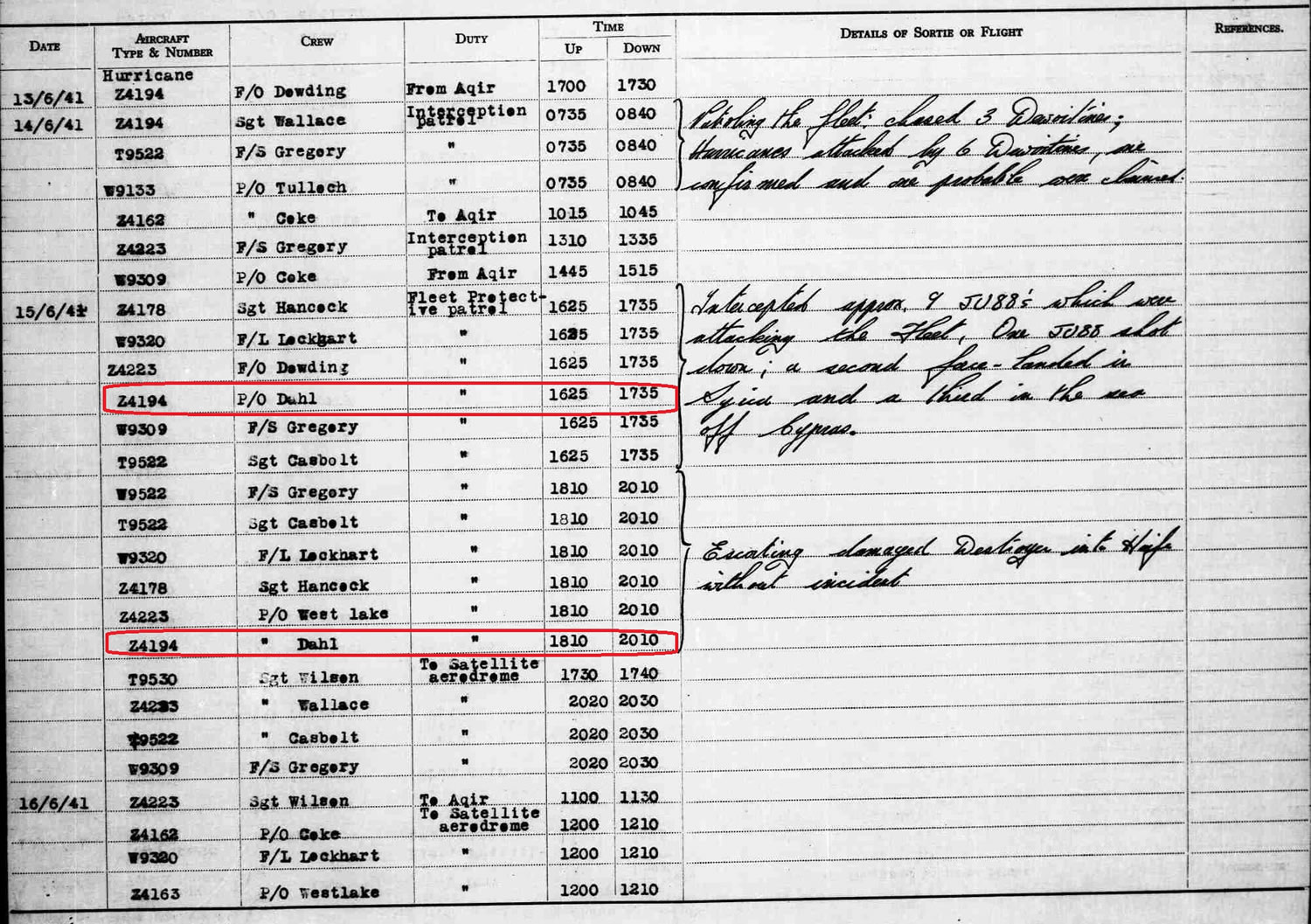
By using these official R.A.F. Operations Record Books we are immediately able to see just what action the members of various Royal Air Force, dominion and Allied Air Force squadrons, that came under British Command, did on a day to day basis. When it is someone we recognize, such as a family member or a famous person, finding them mentioned in these journal like records gives us such amazingly valuable information to add to our research, and perhaps understand just a little of what they had experienced.






